Aruba is a prime vacation spot with lots of fun activities year-round. Despite its small size, this tiny island paradise is home to an abundance of deep-sea fish. You will not have to go far before finding trophy Aruba fish species because the surrounding water gets to 1000 feet just a few miles from shore.
March through October are peak seasons for both inshore and offshore fishing. However, fishing in Aruba is an all-year-round activity and some species peak during winter.
Read on to find out the species of fish you can see and catch while on vacation.
Table of Contents- 1. Blue Marlin
- 2. Barracuda
- 3. Bonefish
- 4. Mahi Mahi
- 5. Wahoo
- 6. King Mackerel
- 7. Grouper
- 8. Bull Shark
- 9. Sailfish
- 10. Albacore (Tuna)
- Frequently Asked Questions
- What is the best time/season to fish in Aruba?
- What are the best fishing spots in Aruba?
- Conclusion: Be On the Lookout for These Fish in Aruba
1. Blue Marlin
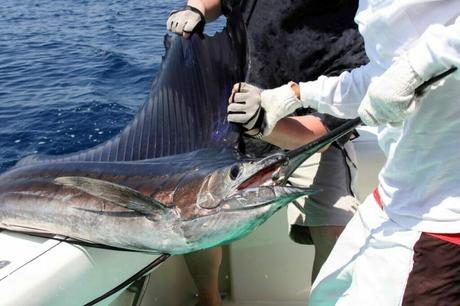
The Blue Marlin is a sport fishing delight, widely pursued by anglers worldwide. It thrives on the tropical and temperate waters of Aruba. This legendary game fish is loved for its tremendous fighting ability and speed.
As one of the largest Atlantic Marlins, this fish is striking, with an average size of 11 feet and 200 to 400 pounds. The female Blue Marlin is significantly larger, growing up to 14 feet and 1985 pounds.
Blue Marlin is one of the fastest predator fish that feeds on Mackerel, Tuna, and Squid. It is cobalt blue on top and silvery white below, giving it the perfect camouflage. Blue Marlin is unsuitable for human consumption because it has high doses of mercury. However, it is a delicacy in Japan and is eaten raw as sashimi.
Although the species share many general characteristics as the rest of its family, its most obvious physical feature is the presence of a long pointed bill that it uses to hunt its prey.
2. Barracuda

Growing 18 inches to 6 feet long, the Barracuda has a reputation as a ruthless predator. It is common in tropical and subtropical regions with warm waters. It frequents shallow coastal waters close to coral reefs and shorelines and can be found at 330 feet deep.
There are several species of Barracuda. However, game fish lovers are particularly enthralled with the Great Barracuda, a muscular fish with streamlined torpedo-shaped bodies that helps its grip during fights. It is menacing with dagger-like teeth and preys on tiny fish or even fish bigger than it.
The Great Barracuda is fearsome and built for speed with its torpedo-shaped body. The grey, white, and blue color on top with shiny silver sides helps Barracudas camouflage and ambush their prey. It is aggressive and will put up a fight with a fish hook, making it an excellent game fish.
It’s also important to mention that Barracuda hunt more by sight than smell, making them dangerous to human divers.
3. Bonefish
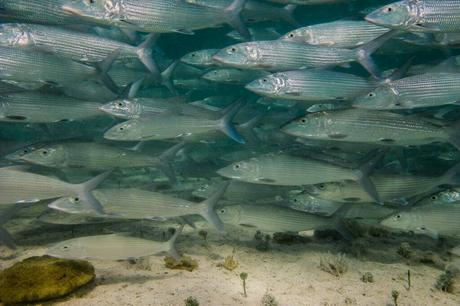
Popularly nicknamed “grey ghost,” Bonefish is an elusive and stealthy species. It has an incredible burst of speed and can travel 40mph. Bonefish love tropical and temperate shallow waters. It grows 30 inches and weighs 14 pounds.
Fishing for Bonefish is a great art form because they’re highly suspicious. You will have to take care with timing, measuring, and casting. Additionally, avoid bright colors or distinctive smells. Anglers catch Bonefish by mimicking the movement of their prey, such as shrimp, with their lures.
Bonefish is lightning fast and will test the patience of even the most seasoned and skilled angler. However, it puts up a fight when it bites the bait, making it worth the effort. It prefers shallow flats, and the back is blue-green, making it blend into grass-covered areas.
One of its biggest defence mechanisms is the use of its natural camouflage to remain undetected by anglers and other predators. Some other unique traits include tailing in the water while feeding in shallow water.
4. Mahi Mahi
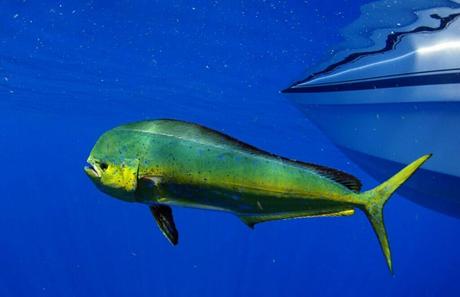
Fast swimming Mahi Mahi, a tropical water fish, is also called the common dolphin. It thrives in temperate coastal waters at 72°F to 79°F, which is why it thrives in Aruba.
The most obvious physical features of this colorful fish is its blunt face and long body. It also has a caudal fin and a dorsal fin that runs the length of its body,
Mahi Mahi is a recreational sportfish beloved by anglers worldwide. It is aggressive and will bite any lure while putting up an excellent fight. You can usually find it hiding among floating objects such as weeds, debris, and residue. The Mahi Mahi is also called the flying fish because it can jump vertically out of the water to several feet high.
The Mahi Mahi weighs 30 pounds. The most significant Mahi Mahi ever caught was by Captain Jose Wijebe in 1999, weighing 128 pounds (58kg). It is a tasty year-round fish eaten in many delicacies.
5. Wahoo
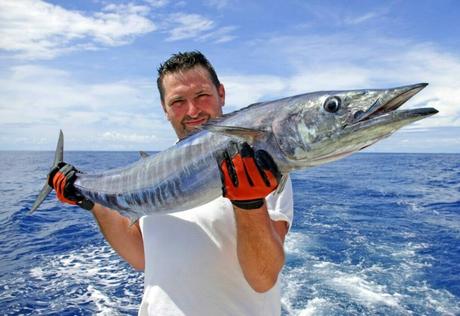
A favorite of sports fishermen for its speed and flesh is the Wahoo. It is abundant in temperate tropical and subtropical waters. Besides being tasty, it also packs a healthy amount of sodium, vitamins B6, B12, and Niacin.
Wahoo is one of the fastest fish in the world, with its torpedo-shaped body traveling up to 79mph. It has a powerful jaw with razor-sharp teeth. The Wahoo is cunning, aggressive, and assertive, giving anglers a thrill. Because its mouth is soft while the jaws move side to side and up and down, it can easily break loose from your hook.
However, sport fishers especially love the challenge of catching a Wahoo. Its screaming runs when hooked can burn out your reel. Although the Wahoo is a year-round fish, its peak season is January to April and September to December.
6. King Mackerel
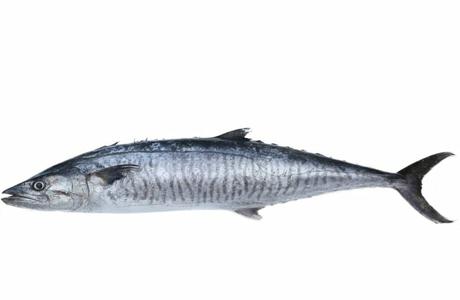
Lightning fast with sharp teeth, the King Mackerel hits hard and flights hard, testing the skills of even the most seasoned sport fisherman. It thrives in warm temperate waters at 70°F. Dubbed the King of the sea, King Mackerel weighs 20 to 50 pounds and makes a fun challenge.
You can spot the King Mackerel among large schools of fish. Trolling is the best technique for catching this fish. Anglers use live or frozen baits with multiple hooks and bite-resistant wire leaders. You can drop chum or small lures of fish like cigar minnows, threadfin, mullets, and yellowtail snapper. July to December and January to March are peak seasons for fishing King Mackerel.
7. Grouper
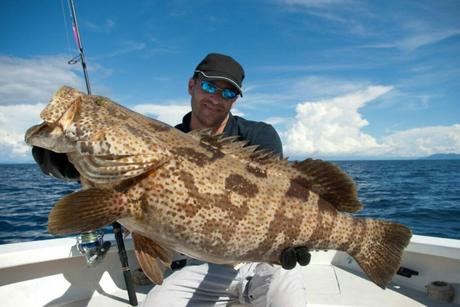
All species of Grouper are present in Aruban waters. Although fishing for Grouper is done all year round, peak season is from November to February.
This bottom-dwelling species is known for its distinctive flavor and texture. The Goliath Grouper is an opportunistic predator that feeds on smaller and slower fish like the calico crab. This sleek and aggressive monster fish gives anglers an intense adventure.
Goliath Grouper typically weighs about 350kg (770 pounds) and grows a length of 2.5m. Its large mouth and strong jawbone put up a fight when hooked. This carnivore inhabits rocky areas, reefs, and wrecks where they hide bd ambush prey.
Goliath Grouper is a protected species, and there’s a catch-and-release policy.
8. Bull Shark
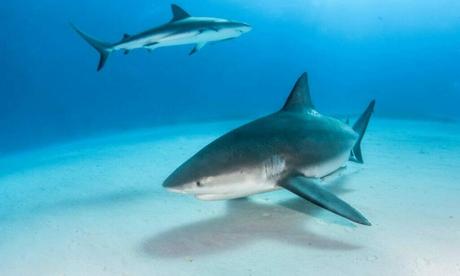
Large and ferocious, Bull Sharks are a top 3 specie of fish responsible for human attacks. It is also one of only two species of sharks found in fresh waters, as shallow as 100 feet.
The Bull Shark has an intense bite force, weighing 700 pounds and 6-8 feet in length. It is found in warm tropical waters using natural bait or whole fish such as mullet, Mackerel, and herrings. Make sure to dip bait in tuna oil to enhance the smell and draw the bull shark out.
Additionally, throw in a bucket of the bloodiest chum to draw the Bull Shark out. This dangerous fish inhabits nearshore and offshore waters and can live up to 24 years.
9. Sailfish

The Sailfish is a magnificent fighter that is sought after in Sports fishing. It is abundant in tropical and subtropical waters and lives near the surface where temperatures are warmer.
It is one of the fastest fish in the sea, growing to an impressive length of 9.7 feet and weighing 200 pounds. You can easily recognize Sailfish by its high dorsal fin. When hooked, it will bless you with an acrobatic display and is in the top 10 authoritative list of the world’s top 100 game fish.
Trolling is the best technique often used by anglers to lure the Sailfish. It feeds on smaller fish, octopuses, and squid, which can be used as dead bait alongside Mackerel or bonito.
10. Albacore (Tuna)
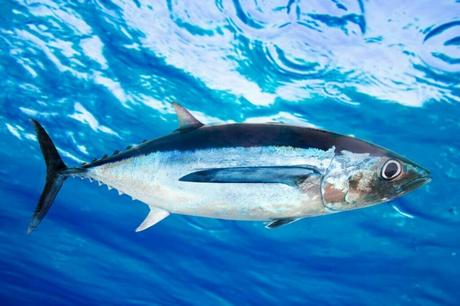
Albacore is the most sought-after species of tuba and is present in mild temperate waters at 60°F to 64°F. It weighs 20-45 pounds and reaches 25 inches in length. However, it can grow to 55 inches and weigh 130 pounds.
Albacore is tasty and has good game qualities. It is a fast and voracious predator often caught with a light tackle—trolling technique with live bait or small fish such as mullet, herrings, and squid.
Frequently Asked Questions
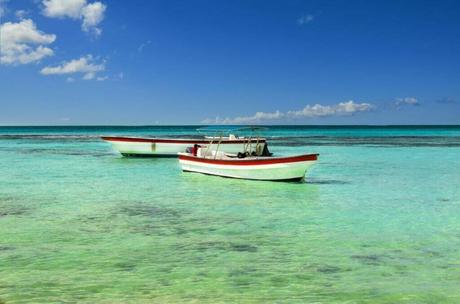
What is the best time/season to fish in Aruba?
The best time to fish in Aruba is between March and October. But you can still catch different species of fish in Aruba throughout the year. In fact, many species peak during the winter months, so don’t limit your fishing experience if you come here during these months.
Besides, Aruba’s warm water and tropical climate make it a perfect fishing location all-year-round.
What are the best fishing spots in Aruba?
If you’re an experienced fisherman, you will have the correct fishing techniques to lower your hook anywhere and make your catch. But hobby fishermen need to find the perfect spot for the best catch.
Aruba boasts several amazing fishing locations that host different species of fish. Some of the most popular fishing locations in Aruba include:
1. Malmok beach
2. Manchebo beach
3. Renaissance beach
4. Noord
5. Spanish Lagoon
Each of these fishing spots boasts different species of fish, so it makes sense to choose based on the type and species of catch you want.
Conclusion: Be On the Lookout for These Fish in Aruba
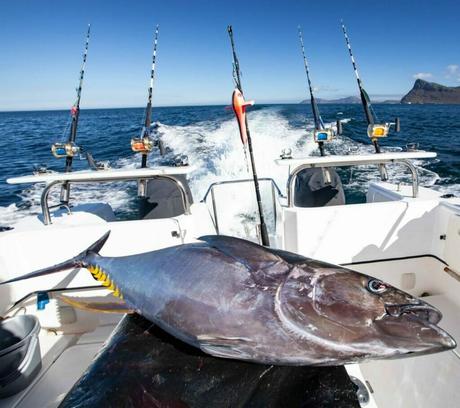
Aruba’s warm temperate waters make it a popular year-round spot for game fishing. Fish are abundant in the water, with popular favorites such as the Blue Marlin, Barracuda, Bonefish, Mahi Mahi, Wahoo, King Mackerel, Grouper, Bull Shark, Sailfish, and Albacore (Tuna).
Many fish thrive in shallow and reefed waters, providing an opportunity for inshore and offshore fishing. This guide talks about some of the popular fish species in Aruba. There are more that you’ll find when you truly set out to explore the waters in Aruba.

